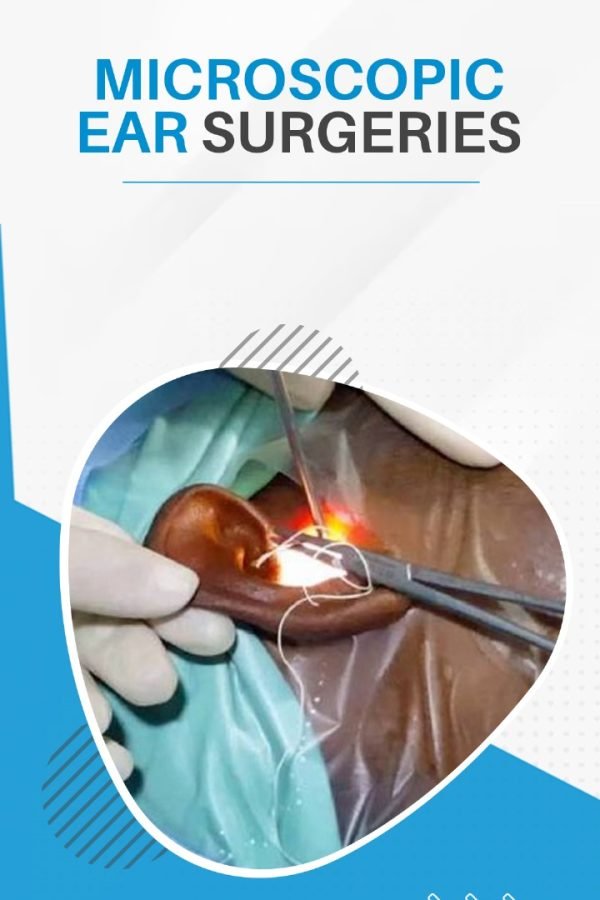- Anal Fissure Laser Surgery in Dombivli
- Appendix Treatment in Dombivli
- Bariatric Surgery in Dombivli
- Best Laparoscopic Surgeon in Dombivli
- Blogs
- Contact us
- Custom
- Dr Rahul Mahadar
- Dr. Dhanashree Mahadar
- Endoscopy Clinic in Dombivli
- Ent Surgeon in Dombivli
- Gallbladder Stone Treatment in Dombivli
- Gastrointestinal Surgeon in Dombivli
- Hernia Surgeon in Dombivli
- Home
- Laser Fistula Surgery in Dombivli
- Laser Piles Surgeon in Dombivli
- Services
- Specialities
- Testimonials
- Video


The field of medical science has witnessed remarkable advancements in recent years, especially in the realm of microscopic surgeries. One such area that has benefited immensely from technological progress is microscopic ear surgery. This cutting-edge approach allows surgeons to perform intricate procedures with unparalleled precision, addressing a wide range of ear-related issues. In this blog, we will delve into the fascinating world of microscopic ear surgeries, exploring their significance, techniques, and applications.
The Significance of Microscopic Ear Surgeries:
The human ear is a complex organ, responsible for not only hearing but also maintaining balance. Various conditions, including infections, trauma, and congenital abnormalities, can affect the delicate structures of the ear, leading to impaired hearing or other complications. Microscopic ear surgery plays a pivotal role in addressing these issues by allowing surgeons to navigate the intricate anatomy of the ear with precision.
Key Techniques in Microscopic Ear Surgeries
Hypothyroidism is known as an underactive thyroid and it occurs when the thyroid gland makes too low thyroid hormone. Women are more commonly diagnosed with hypothyroidism. An autoimmune disease like Hashimoto’s disease can cause body’s immune system to produce antibodies that attack thyroid tissue and damage the function of gland leading to less production of Thyroid Hormone. Hypothyroidism can usually be easily treated with thyroid hormone medicine. Hypothyroidism is much more common than hyperthyroidism.
Endoscopic Ear Surgery
Endoscopic techniques involve the use of a thin, flexible tube with a light and camera at the tip (endoscope) to visualize and access the ear structures.
This approach minimizes the need for larger incisions, reducing trauma and promoting quicker recovery.
Laser-Assisted Ear Surgery
Lasers are employed in ear surgeries for cutting or vaporizing tissues, offering a bloodless and precise alternative to traditional methods.
Laser-assisted procedures are particularly beneficial for conditions like otosclerosis and certain tumors.
Stapedectomy
Stapedectomy is a microscopic surgery aimed at treating hearing loss caused by otosclerosis, a condition where abnormal bone growth affects the stapes bone in the middle ear.
Surgeons use micro-instruments to replace the stapes bone with a prosthesis, restoring hearing function.
Cochlear Implantation
Microscopic techniques are crucial in cochlear implantation, a procedure that involves placing an electronic device in the inner ear to restore hearing in individuals with severe hearing loss or deafness.
Chronic Otitis Media
Microscopic ear surgery is frequently employed to treat chronic otitis media, an inflammation of the middle ear that can lead to hearing loss and other complications.
Tympanoplasty
Tympanoplasty, a surgical procedure to repair the eardrum, often utilizes microscopic techniques for precise reconstruction and improved outcomes.
Facial Nerve Disorders
Conditions affecting the facial nerve, such as facial nerve tumors or paralysis, may be addressed through microscopic surgeries to preserve facial function.
Congenital Ear Abnormalities
Microscopic techniques are invaluable in correcting congenital abnormalities of the ear, ensuring optimal development and function.
Microscopic ear surgeries represent a remarkable leap forward in the field of otolaryngology, enabling surgeons to perform delicate procedures with enhanced precision and minimal invasiveness. As technology continues to evolve, it is likely that microscopic approaches will become even more sophisticated, further improving outcomes and expanding the scope of conditions that can be effectively treated. The intricate world of microscopic ear surgeries continues to be a beacon of hope for individuals grappling with various ear-related challenges, promising a future of improved hearing and enhanced quality of life. For any ear problems, meet Dr Dhanashree Mahadar, an experienced ENT Surgeon in Dombivli at Jeevanshree Hospital.

